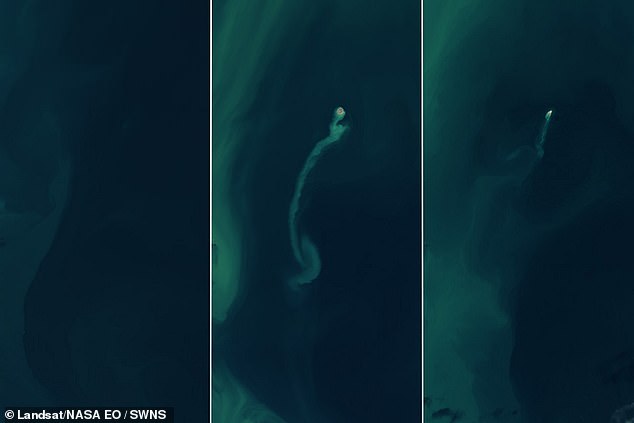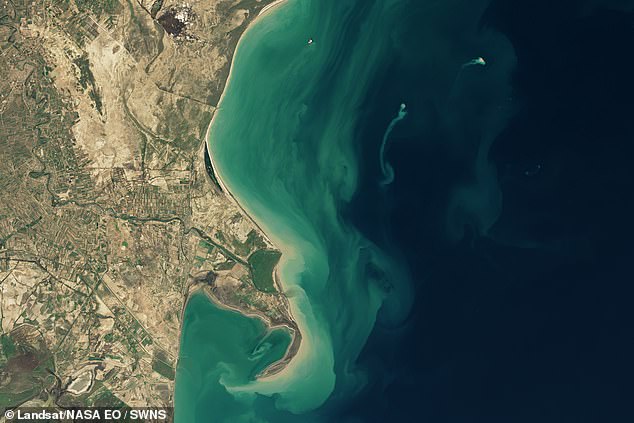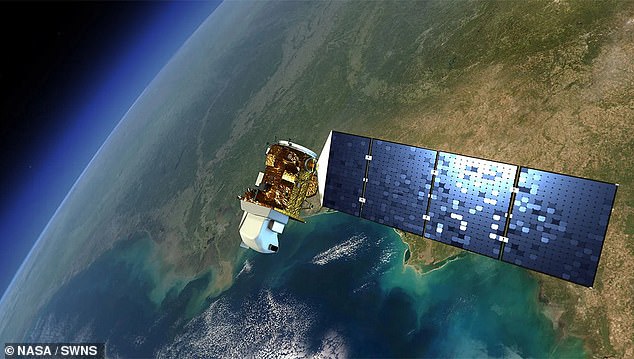The notion of an "island of the dead" or a secretly abandoned place might evoke a plotline from a popular mystery series.
It has become a reality in the Caspian Sea.
Satellites spotted a mysterious island, only to lose sight of it entirely.
Following an eruption of a mud volcano in the year 2023.
By late 2024, it had almost entirely dissolved.
According to NASA's Earth Observation Program, the island shifted out of sight like a mysterious ghost.
'The Kumani Bank mud volcano's massive eruptions have resulted in several temporary islands forming on multiple occasions since it first erupted in 1861,' it explained.
This underwater feature is also known as Chigil-Deniz and is situated approximately 15 miles west of Azerbaijan's eastern coast, at a distance of about 25 kilometers.

NASA's Landsat 8 and 9 satellites took images of the island on November 18, 2022, February 14, 2023, and December 25, 2024.
In November, the volcanic peak was still submerged underwater.
By February, however, the island had emerged, and a sediment plume drifted away from it.
Mark Tingay, a geologist at the University of Adelaide, stated that additional satellite observations indicate that the island existed between January 30 and February 4 and measured approximately 400 meters (1,300 feet) in diameter.
However, by the end of 2024, this island had vanished out of sight with more than half of the Kumani Bank exposed above the water.
Previous eruptions of the volcano have taken place in bursts lasting under two days, and have resulted in the formation of islands of varying sizes and durations.
'A significant May 1861 event led to an island formation measuring approximately 87 meters in width and 3.5 meters in height above the water level,' NASA stated.
The one eroded away by early 1862.


The most powerful eruption, which occurred in 1950, resulted in the formation of an island that measured 700 meters (2,300 feet) in diameter and 6 meters (20 feet) in height.
Mr Tingay describes mud volcanoes as "weird and wonderful features" but admits that they are "largely understudied and little understood".
Most mud volcanoes are located in areas with significant tectonic activity, with Azerbaijan noteworthy for its unusually high frequency of such occurrences.
'Geologists have recorded over 300 earthquakes in eastern Azerbaijan and in the Caspian Sea, with the majority of them occurring on land,' NASA said.
'The region is situated within an area where the tectonic plates of the Arabian and Eurasia converge and come into contact.'
Unfortunately, mud volcanoes have the potential to pose a risk due to their capability to eject significant quantities of materials, including flames, over a relatively short duration.
"It is uncertain if the 2023 Kumani Bank eruption was explosive, but past eruptions of this and other nearby mud volcanoes have sent towering columns of fire hundreds of meters into the air," NASA noted.
Read more